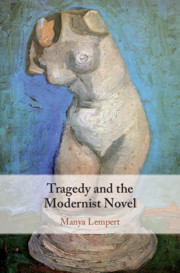18 results
Chapter 4 - Approximations
- from Part II - Probable Realisms
-
- Book:
- The Art of Uncertainty
- Published online:
- 29 February 2024
- Print publication:
- 07 March 2024, pp 152-201
-
- Chapter
- Export citation
Chapter 4 - Empires, Slaves, Rebels, and Revolutions
-
- Book:
- V. S. Naipaul and World Literature
- Published online:
- 01 February 2024
- Print publication:
- 08 February 2024, pp 98-130
-
- Chapter
- Export citation
Chapter 3 - Onomatopoeia, Nonsense, and Naming
- from Part I - Species, Lyric, and Onomatopoeia
-
- Book:
- Biopolitics and Animal Species in Nineteenth-Century Literature and Science
- Published online:
- 11 January 2024
- Print publication:
- 01 February 2024, pp 46-66
-
- Chapter
- Export citation
Chapter 1 - Species Lyric
- from Part I - Species, Lyric, and Onomatopoeia
-
- Book:
- Biopolitics and Animal Species in Nineteenth-Century Literature and Science
- Published online:
- 11 January 2024
- Print publication:
- 01 February 2024, pp 9-23
-
- Chapter
- Export citation
The Necessity of God: Modern Theology and the Church’s Witness
-
- Journal:
- Journal of Anglican Studies , First View
- Published online by Cambridge University Press:
- 23 August 2023, pp. 1-15
-
- Article
- Export citation
Chapter 1 - Clare Leighton & Thomas Hardy’s The Return of the Native
-
- Book:
- The Art of the Reprint
- Published online:
- 23 March 2023
- Print publication:
- 30 March 2023, pp 22-55
-
- Chapter
- Export citation
Chapter 10 - Labour Isn’t Working
- from Part II - Times
-
-
- Book:
- A History of English Georgic Writing
- Published online:
- 01 December 2022
- Print publication:
- 15 December 2022, pp 215-234
-
- Chapter
- Export citation
Introduction
-
- Book:
- Modernist Literary Collaborations between Women and Men
- Published online:
- 20 October 2022
- Print publication:
- 27 October 2022, pp 1-24
-
- Chapter
- Export citation
Chapter 5 - ‘We Teach ’Em Airs That Way’
-
- Book:
- Birdsong, Speech and Poetry
- Published online:
- 15 September 2022
- Print publication:
- 22 September 2022, pp 137-179
-
- Chapter
- Export citation
Chapter 3 - Hardy and the Vanity of Procreation
-
- Book:
- The Novel and the Problem of New Life
- Published online:
- 24 June 2021
- Print publication:
- 15 July 2021, pp 48-69
-
- Chapter
- Export citation
Chapter 6 - Thomas Hardy
- from II - Influences and Traditions
-
-
- Book:
- Seamus Heaney in Context
- Published online:
- 15 March 2021
- Print publication:
- 01 April 2021, pp 73-83
-
- Chapter
- Export citation
Chapter 2 - Hardy’s Theory of Tragic Character
-
- Book:
- Tragedy and the Modernist Novel
- Published online:
- 20 August 2020
- Print publication:
- 10 September 2020, pp 30-64
-
- Chapter
- Export citation

Tragedy and the Modernist Novel
-
- Published online:
- 20 August 2020
- Print publication:
- 10 September 2020
7 - Fearing the Map: Representational Priorities and Referential Assumptions
-
- Book:
- Reading and Mapping Fiction
- Published online:
- 11 June 2020
- Print publication:
- 02 July 2020, pp 237-272
-
- Chapter
- Export citation
Chapter 2 - A Great Kick at Misery
-
- Book:
- Dionysus after Nietzsche
- Published online:
- 27 March 2020
- Print publication:
- 16 April 2020, pp 68-98
-
- Chapter
- Export citation
Chapter 11 - The Secular Turn in British Literature of the 1880s
-
-
- Book:
- Nineteenth-Century Literature in Transition: The 1880s
- Published online:
- 10 October 2019
- Print publication:
- 17 October 2019, pp 223-243
-
- Chapter
- Export citation
Part III - The Biopolitics of Animal Capital
-
- Book:
- The Political Lives of Victorian Animals
- Published online:
- 08 June 2019
- Print publication:
- 04 July 2019, pp 161-225
-
- Chapter
- Export citation
Chapter 5 - Animal Capital and the Lives of Sheep
- from Part III - The Biopolitics of Animal Capital
-
- Book:
- The Political Lives of Victorian Animals
- Published online:
- 08 June 2019
- Print publication:
- 04 July 2019, pp 163-197
-
- Chapter
- Export citation



